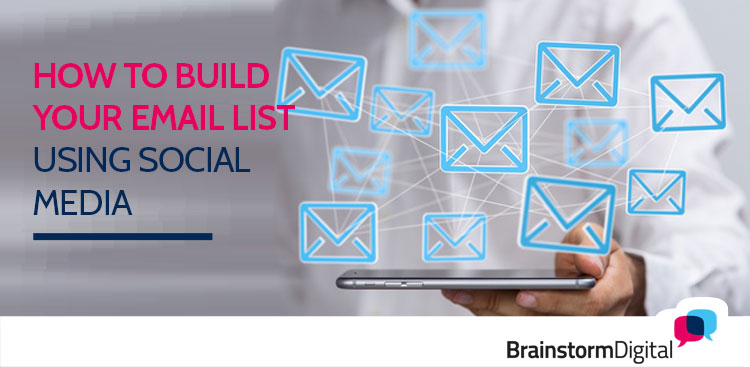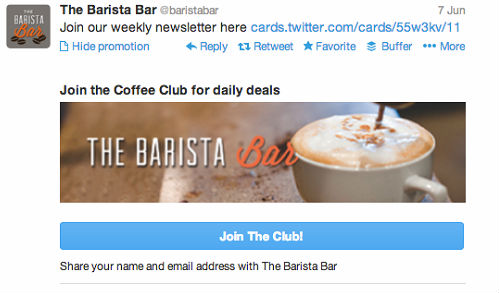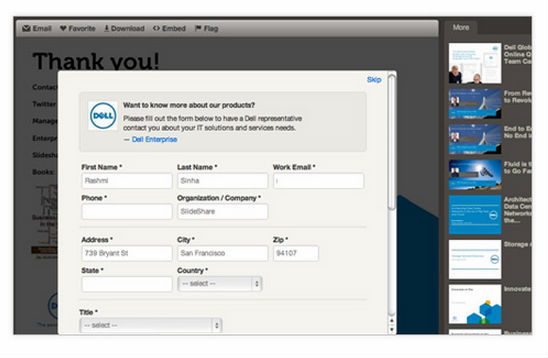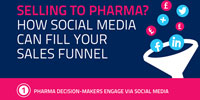 One of the biggest myths about content marketing is that if you publish lots of good content on social media, you will suddenly find your business booming.
One of the biggest myths about content marketing is that if you publish lots of good content on social media, you will suddenly find your business booming.
Now don’t get me wrong – good content (and lots of it) is absolutely crucial to the process of building your business online. And sometimes, you will find that prospects become so excited by what you’re publishing on Facebook or Twitter, they’ll get in touch directly.
But most of the time, it’s a little more complex. As a marketer, you cannot rely on people randomly contacting you on the off-chance that they’ve seen a particularly dazzling tweet. You need a system in place to keep track of who’s interested in your material, so that you can actively nurture your relationships, sending them more content they really want, and gradually push them towards that sale.
That system is called “email marketing”. Build up a database of leads who want to hear from you, and then communicate with them regularly, and occasionally make them offers they simply cannot refuse. Used well, your email list will become one of your business’s greatest assets.
Does this mean that social media is a waste of time? On the contrary. Savvy marketers use social media to attract just the right people, and then get them to sign on for regular emails.
So how do you do it? Here are six ways to build up your email list, using social media.
Give away a piece of content – for free
It may sound counter-intuitive that giving away something for free can generate more business, but here’s how it works.
You create a piece of content that your potential clients will find really useful – perhaps an eBook about their biggest business problem, a cheat-sheet, or a video series. Then you post it on your website on a dedicated landing page, and offer it to visitors – in return for their email address.
Bingo! Your potential clients have won because they have access to a guide, or training, that they want and need. And you’ve won because you now have the email address of someone who is potentially interested in what you have to offer.
Make sure, though, that it’s clear to people who sign up that they will also be receiving emails from you. They need to consent to this process – nothing will annoy your prospects more than to receive emails they never wanted in the first place.
Bonus tip: Make sure that your “lead magnet” – as it’s known in the business – is heavily promoted across your website, and not buried where no one can find it. Feature it prominently on every page, perhaps even several times on the same page. Use Google Analytics to work out where your website visitors access the offer – across the top of the page? On the sidebar? At the bottom of your blog post? Some marketers even feature it on a pop-up.
Use social media advertising
 Advertising online gets an undeservedly bad rap – why, companies ask, should they pay to get more fans or get their content seen by existing fans, when these are supposed to be “free” platforms?
Advertising online gets an undeservedly bad rap – why, companies ask, should they pay to get more fans or get their content seen by existing fans, when these are supposed to be “free” platforms?
But I’m talking about something different here: Not advertising your Facebook page or paying to promote your favourite tweet, but paying to promote your piece of free content.
Lead those who click on your ad to your dedicated landing page on your own website!
Why is this a good strategy? Because across the major platforms, you can target your ads extremely precisely, showing it only to people who would probably make good leads. You can pick people within a certain geographic area, or with certain interests.
On Facebook, you can target people who are already connected to you on LinkedIn, who have visited your website, or who are ‘similar’ to people on your existing email list. LinkedIn ads can be targeted by job title, company size, membership of a certain LinkedIn group and many other factors. On Twitter, you can go for your own followers, or people using certain keywords, and so on.
As before, you need to make sure that your prospects have to part with their email address to access your content.
Bonus tip: On Twitter, use a lead-generation card that is specifically designed to help you collect relevant email addresses.
Use Facebook apps
Yet another way to promote your free product is directly on your Facebook fanpage. Instead of leading people out of Facebook (as you would with an ad), create a special landing page within Facebook that your fans can access when they visit your company page.
Until recently, you did this through ‘Custom Tabs’ (I’m mentioning this because it might be familiar to many of you), but Facebook’s recent company page redesign made these obsolete. Nowadays you have to use the Apps function. Here’s a video that explains what I’m talking about and how to do it:
Slideshare. Slideshare is the social media world’s best-kept little secret. Owned by LinkedIn, it allows companies to upload Powerpoint presentations (and infographics). With over 60 million visitors a month, that’s a lot of potential traffic – but usefully, you can also easily embed your presentation on your website, LinkedIn and other platforms.
Why is this particularly good for generating leads? Because of a nifty little Slideshare feature that allows Pro users to create lead-capture forms that pop up as a viewer makes their way through your presentation. You can advertise your free product, or prompt viewers to register for your email list – and Slideshare will collect their email address for you.
 Bonus tip: If you want your Slideshare presentations to be widely seen, don’t just put up your Powerpoint from your last meeting – create decks from scratch that are visually appealing, avoid bullet points, and have a strong narrative structure (leading your viewers through an argument with a beginning, middle and end).
Bonus tip: If you want your Slideshare presentations to be widely seen, don’t just put up your Powerpoint from your last meeting – create decks from scratch that are visually appealing, avoid bullet points, and have a strong narrative structure (leading your viewers through an argument with a beginning, middle and end).
Host webinars and Google hangouts. This is another form of free content you can give away in exchange for an email address. The difference between webinars and Google hangouts, and eBooks, cheat-sheets etc is that the former are one-off events rather than a permanent offer, and they’re not hosted on your website.
The general principle is the same, though: You create a presentation that is really valuable for your prospects, and get people to sign up for it. Again, you need to make clear that you will be using their emails for other purposes as well.
Webinars / hangouts have several features that make them particularly attractive as lead-generators. First of all, you can reach thousands of people (potentially) at once. Because they can hear you and perhaps even see you, you build up an instant rapport with your audience.
Live polls not only liven up your presentation, they allow you to collect valuable data about the people on your webinar – showing you who might have a particular need for your service or product.
Bonus tip: Send out a survey after the webinar is finished, asking people what they found most useful and what could be improved. Throw in a couple of questions about whether they need your service, and whether they might want a consultation with you – and you have an immediate list of potential customers who have actually asked to be contacted by you.
Create an Infographic. Right now, everyone’s producing infographics – visual representations of data. They’re hot stuff.
What almost no-one is doing is using them for lead-generation! At the bottom of your Infographic, include a call-to-action, asking your audience to download from your website a related piece of content that will add to their understanding of the issue covered in the infographic.
By now, you know that that piece of content will be gated – ie, accessible in exchange for an email address.
 Bonus tip: Want to see how this works in action? Check out the infographic we recently produced, showing how Pharmaceutical companies can generate leads through LinkedIn. At the very bottom, we included a link to an eBook about Pharma and LinkedIn – and saw an immediate rush of sign-ups.
Bonus tip: Want to see how this works in action? Check out the infographic we recently produced, showing how Pharmaceutical companies can generate leads through LinkedIn. At the very bottom, we included a link to an eBook about Pharma and LinkedIn – and saw an immediate rush of sign-ups.
How do you generate leads through social media? Please share your best tips in the comments!






